No products in the cart.
Fanning the Embers
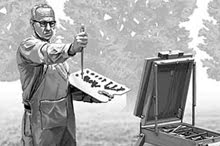
A Legacy Ignites
By James Walker
Photos Courtesy of Dr. Peck Legacy, Inc.
I recognized the name on the call and quickly answered my cell phone. A long pause followed, and then I heard a raspy, tired-sounding voice on the line: “It’s finished.” There was another pause and then, more decisively, the man with the gravelly voice repeated, “Jim, it’s finished!”
My heart raced as I hung up, and my thoughts turned to a cavalcade of memories that carried me back to the fall of 2019. That was when I decided to help Carol Peck Hill with the legacy of her dad, Louis A. Peck, Jr., as an Idaho artist and educator.
Louis Peck spent thirty-five years at what is now Boise State University as chair of the art department. He basically built the department from the ground up, but through expansion and attrition, he had become largely forgotten. His signed paintings hung all over the campus, yet few faculty or students knew who he was or what he had meant to the university. He had been my college art professor and friend since 1962 and, like everyone who had known and loved him, I regarded his obscurity as a sad state of affairs.
He was a true Idahoan, born and raised on his family’s homestead near Shoshone. The ambiance and subtle colors of his landscape paintings reflect an Idaho essence that is instantly recognizable. He was a sensitive and humane artist as much as he was an affirming and caring instructor. I owe everything in my professional life to his influence.
One of his former students recently remarked to me, “There are talented artists and there are talented teachers. Dr. Peck was both.”
I wrote a story about him for IDAHO magazine [“Grassroots Tenderness,” December 2019], to which former Peck students responded. That was near the start of the legacy project, but a lot has happened since then.
I had met Louis Peck’s daughter Carol by then, and we agreed that our job should be to fill in the dash between his life dates of 1922–2005. She owned a large body of his work that we decided to reproduce with high-resolution digital scanning. I sorted through hundreds of his watercolors, trying to identify which one could be considered a classic Peck landscape that I should scan first. I settled on a homestead scene of a red barn and outbuildings with gray Idaho hills in the background.
In those early days of our legacy project, I became aware that writing emails and letters would not be enough, so I decided to share the Louis Peck story face-to-face. In December of 2019, Carol and I set up an appointment with Marlene Tromp, who had become the new Boise State president. I thought we should present her with the framed giclée or fine-art inkjet print of that first painting I had scanned for what we were now calling the “Dr. Peck Legacy Collection.”
It turned out that Marlene was raised on a ranch in Wyoming. She immediately loved both the story of Louis Peck and the wonderful Idaho landscape we gave her. Today it hangs in her outer office by the door, where everyone who enters can admire it. Recently, I spoke with a close childhood friend of Louis Peck and his brother Jim, who told me this painting is of the original Peck homestead near Shoshone—an amazing coincidence.
Carol and I also met with university staff. I had done research on the Peck era at Boise State (1955-1990) and had assembled a short presentation. Of course, our project encountered some resistance.
“I also have my favorite art professor,” someone said. “Why shouldn’t we honor him?”
“Maybe you should,” I answered. “In his tenure here, Dr. Peck grew the art department from one person to about the size it is now. The people he hired, mentored and led contributed 639 years of service to the university. Do you have anyone like that?”
“No.”
“Then why don’t we start with him?”
I wanted to stage a show at an on-campus gallery and also a small show and exhibit at the university’s Center for Visual Arts (CVA), in the little critique gallery on the fourth floor that was dedicated to Dr. Louis Peck, sponsored by Carol. (Her memorialization of her father’s name at this gallery proved to be a big help as the years rolled by.) As it turned out, we couldn’t show his work at the CVA Galleries, because they were booked, so we scheduled the show for September 2020 at the gallery in the Student Union Building (SUB). But little did we know the disappointment that awaited.
Boise State art department in the 1970s.
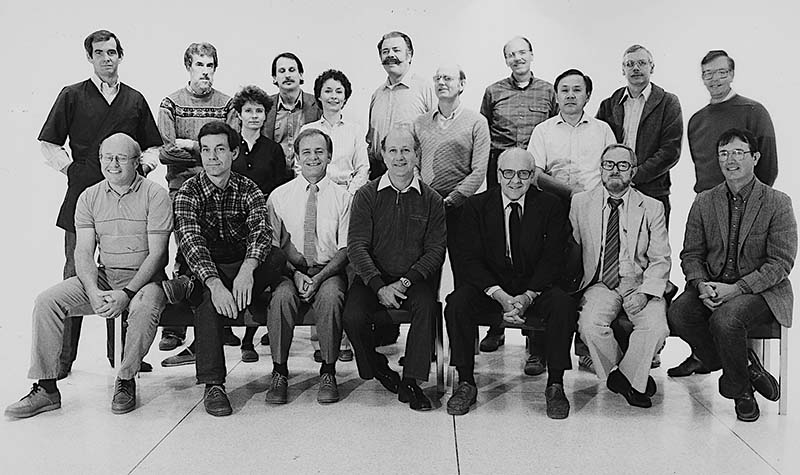
Artist's conception of the memorial statue.
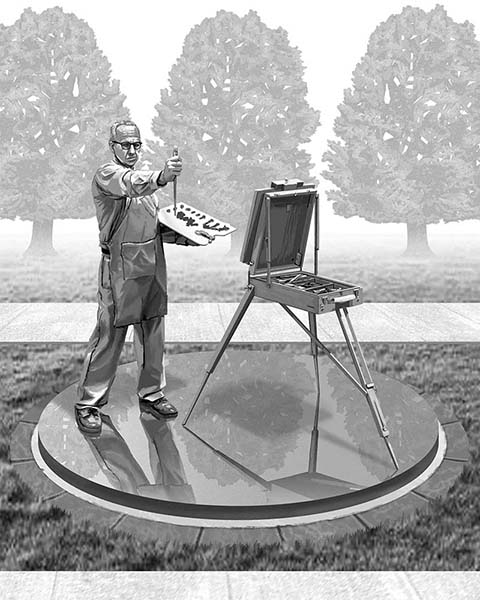
Carol Peck Hill (left) with Boise State president Marlene Tromp.
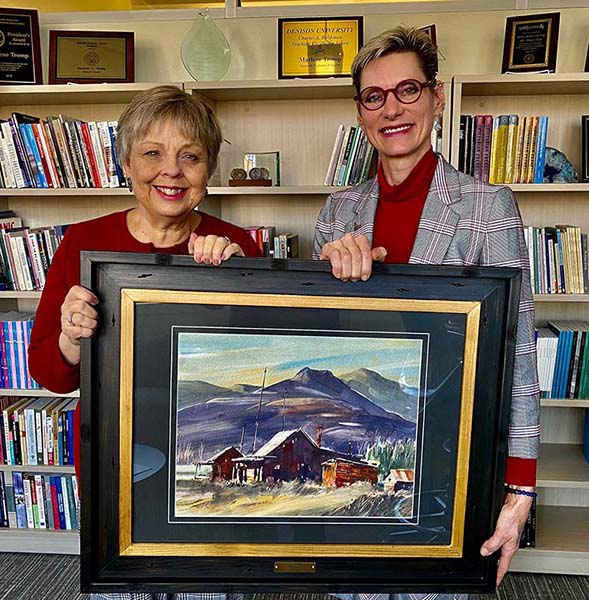
Sculptor Benjamin Victor.
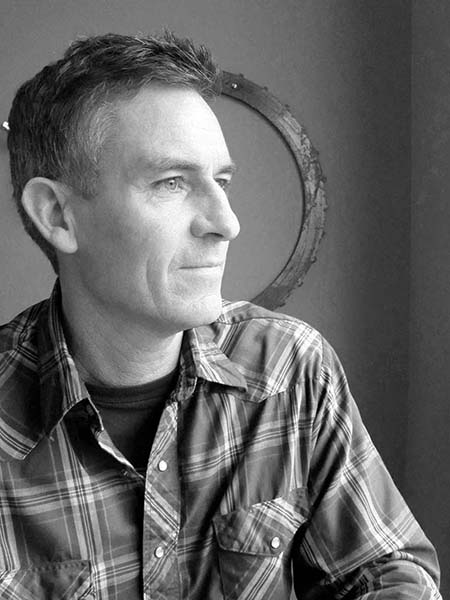
Peck's work shown at Boise State Contemporary Visual Arts Center.

Louis Peck.
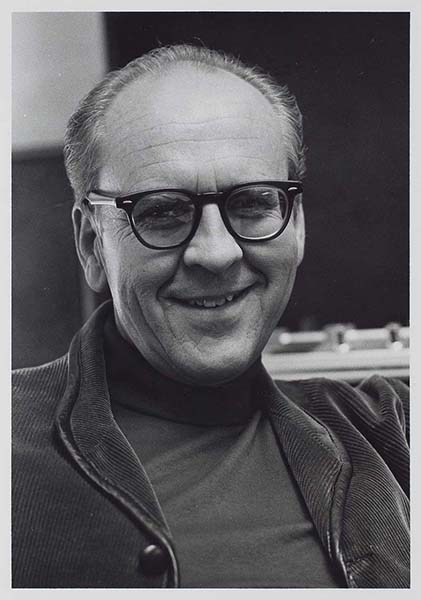
The Stein Luminary at Boise State.
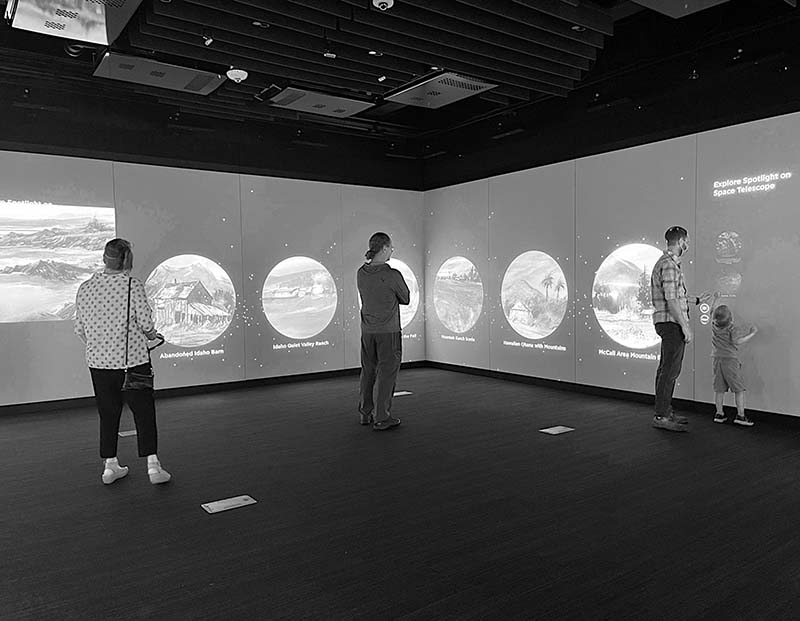
The sculpture's art palate will be colorized.
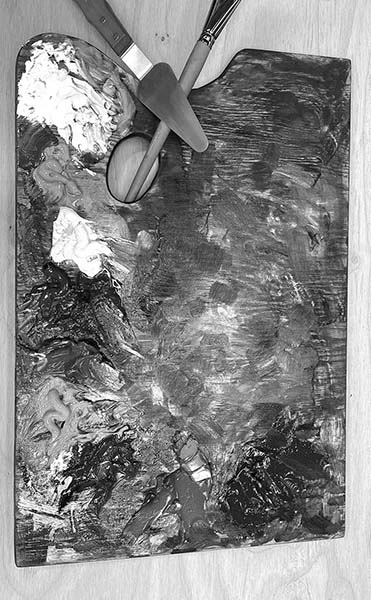
Logo of the non-profit Dr. Peck Legacy, Inc.
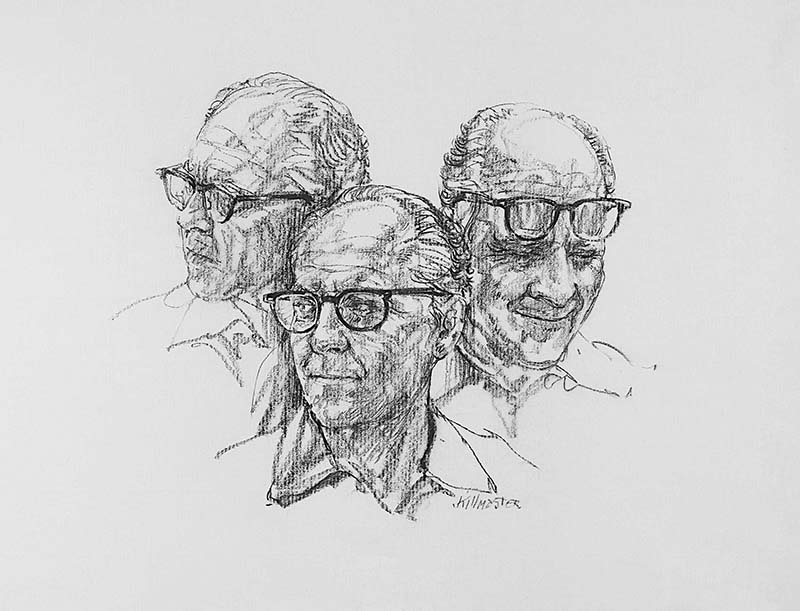
Ben and Carol with the completed clay figure before bronzing.
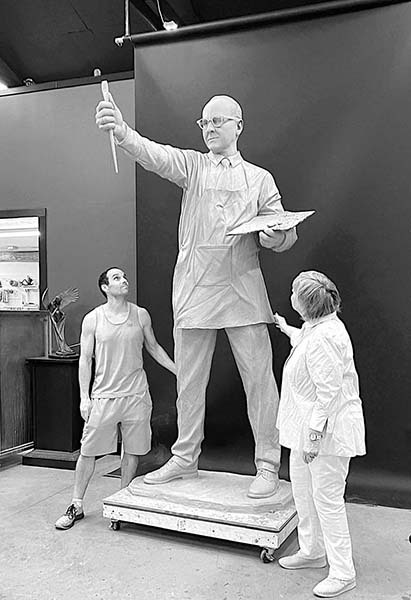
In January 2020, I traveled to Hawaii for a long-planned family vacation. At the resort and pools, I noticed many vacationers wearing facemasks, which made me think, “What do they know that we don’t?” By the time we returned to the mainland on January 20, Covid had turned the world upside down. Our Peck show, on what would have been his ninety-eighth birthday in September, was postponed indefinitely. We tentatively rescheduled for January 2022—a two-year delay!
In response, we did what we could do: we kept scanning the watercolors. Meanwhile, a planned “virtual gallery” facility in the CVA building developed into the Keith and Catherine Stein Luminary. I contacted the director and learned the specifications for artwork that could be projected in the gallery. I discovered that all of our scanned files could easily be saved, at no additional cost, in a format that enabled their display on the walls of the high-tech interactive gallery, which meant they could become a permanent part of the gallery’s collection.
The Luminary was scheduled to open in the summer of 2022, and we expected to have at least five hundred scans completed by then. It was suggested that the digital Peck art could enhance a show of his physical paintings, combining the virtual and the real, which sounded perfect to us. We aimed at September 17, 2022, the anniversary of his one hundredth birthday. I persuaded Idaho Governor Brad Little to designate that day in both 2021 and in 2022 as “Dr. Louis A. Peck Art and Legacy Day.”
During the Covid time-out, we also continued to prepare for the postponed Peck Show at the SUB, now tentatively scheduled to open on January 6. Although the jury was out on whether the campus would even be open by then, we had to be ready. The SUB gallery is fairly large and we would need a lot of artwork to display. It would the first show of his work since he retired in 1989 and we wanted it to feature his art but also to explain who he was. We needed a hybrid show and exhibit, but we had a very limited budget for such a high reach.
Carol came up with a solution to fill the spacious gallery. She took her collection of her dad’s art off her walls at home and incorporated it into the show. Her collection was already professionally framed and the very nature of it provided a retrospective of his art. For the explanatory or exhibit aspect, we reproduced on canvas many historical photos and mixed them in with the art.
Public health restrictions made the January show touch-and-go until the last minute but it was well-attended and a big hit. The gallery director created a digital copy of the show that can be viewed online. At the end of this article is a QR code with which you can access the show if you want to view it on your computer. It’s interactive, so you not only can see the show but you can move about and look at close-ups of all of the art in detail.
On the eve of Louis Peck’s hundredth birthday, he became the first Boise State Faculty professor emeritus to be featured in the CVA’s new high-tech facility. His birthday show was a well-attended hit, at which Marlene gave a thoughtful and moving speech. I felt we had taken the Peck legacy out of the dustbin and moved it back into the mainstream of Boise State history.
Another part of the legacy project that was delayed by Covid was our plan for a biography and art book featuring the art, life, and legacy of Louis Peck. I intended to write, design, and publish it, but public health restrictions made researching and interviewing friends, former faculty, and students nearly impossible. We put the book plans on hold, which turned out to have a silver lining, because in the interim I became acquainted with Christian Winn, who served from 2016-19 as Idaho Writer in Residence, the state’s highest literary honor.
He came on board to help research and to write the book. This year, we began to meet and interview people familiar with the Louis Peck era. It also will be produced as an e-book, which will be distributed free to any Idaho school that requests it from our non-profit company.
The book, which will feature many full color hi-res images of Peck art, has the working title, Unless It Is Beautiful. That’s part of something he often said to me, which I carried throughout my professional life as a graphics designer, as I mentioned in my previous story for this magazine. “Think about it, Walker,” he’d say. “Nothing is completely functional…unless it is beautiful.” I never forgot that concept.
Yet another aspect of our project was to make color hard-copy prints of all his art images that we had scanned. We have now completed two volumes, each with 250 images, and have presented them to The Luminary, along with the computer files for their use. We also have placed the reference volumes on campus in the Kathryn Albertson Library, the CVA library, and the president’s office.
Off-campus, they are at the Boise Public Library, in the Idaho Historical Archives, and in the offices of the governor of Idaho. The Boise Public Library volumes are accessible worldwide through the internet. So, the art and legacy of Idaho artist and educator Louis Peck are secure for future generations to view and appreciate around the globe.
From the beginning of this project, Carol and I felt that something even more than all I’ve described was needed. Something that not only would add to campus culture but would be highly visible, spectacular, and timeless. In 2020 we began planning and developing the concept of the Peck Bronze Memorial. Carol had become acquainted with sculptor Benjamin Victor, who lives in Boise and is the only person ever to have four works in the National Statuary Hall in the United States Capitol. I decided to give him a call and see what we could do. The response from Ben was immediate and very positive. It turns out that his greatest influence in his art career had been his Grandma Lila, who was a lifelong art instructor.
We agreed that the statue of Louis Peck should depict him painting next to his trusty French easel, and on the easel would be a reproduction of that same picture of the Peck homestead that hangs in Marlene’s office. The hues of both the artist’s palette and the painting would be reproduced in a “colorized patina.” Ben began the creation of its clay form, which culminated in the call I received with the message, “It’s finished!” The clay work was done.
We now must raise the rest of the funding to create the molds, cast the bronze, and place it at our preferred location in front of the CVA building. I guess you could say this is an “off-Broadway production,” as we are not financially supported by the university. It is our goal to raise the money we need and present the statue to the school at no cost. I think it will become the “Mona Lisa” of Boise State.
Michelangelo once said, “The greatest danger for most of us is not that our aim is too high and we miss it, but that it is too low and we reach it.”
We are reaching as high as we can. Our dream is that in the years ahead someone—maybe it will be you or your children or your grandchildren—will see the Peck Bronze Memorial and want to know more, and then will go to the library and look him up or read his biography, and then will return to the Luminary and interactively view his paintings in all their glory—and maybe get a feeling for who Dr. Louis A. Peck was and why we memorialized him.
When I first began this journey to help Carol, it was a mystery to us how someone like him could be forgotten. The wry answer to this question that I got from a BSU faculty emeritus was, “Out of sight, out of mind.” I think there’s truth in that but in any case, I now have a better understanding of why we create memorials: because we need to be reminded of important people and events, lest we become ungrateful and much the poorer for it.
Now our job is almost complete, and Louis Peck will be remembered. I trust that the four decades of students whose lives were impacted by him are smiling.
To contribute to the bronze memorial project or for more information, contact the Louis A. Peck Legacy non-profit organization at [email protected], subject line: Bronze. To view an interactive digital show of the artist’s work, visit this site. An on-line auction of art replicas to raise funds for the bronze memorial will be held October 15 to 22. Visit here.
If you enjoyed this story, please consider supporting IDAHO magazine with a SUBSCRIPTION to our print edition, delivered monthly to your doorstep.
This content is available for purchase. Please select from available options.
Purchase Only
Purchase Only

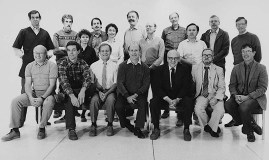
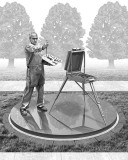
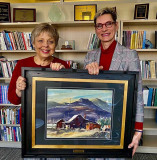
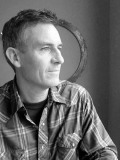
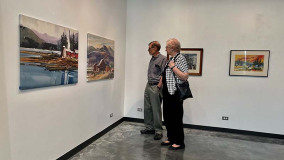
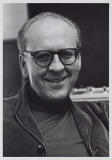
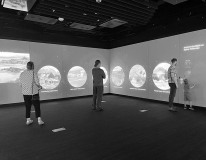

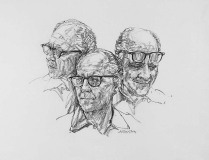
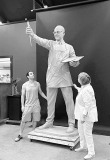
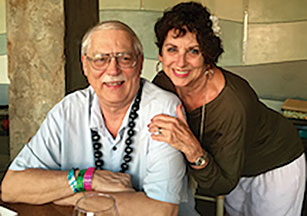
One Response to Fanning the Embers
Gary Oberbillig -
at
I too was privileged to be one of Louis Peck’s students and it has shaped my thoughts about making and teaching art ever since. I knocked on his door years later, and he grinned and said
“We sure had FUN, didn’t we!” Amen to that–